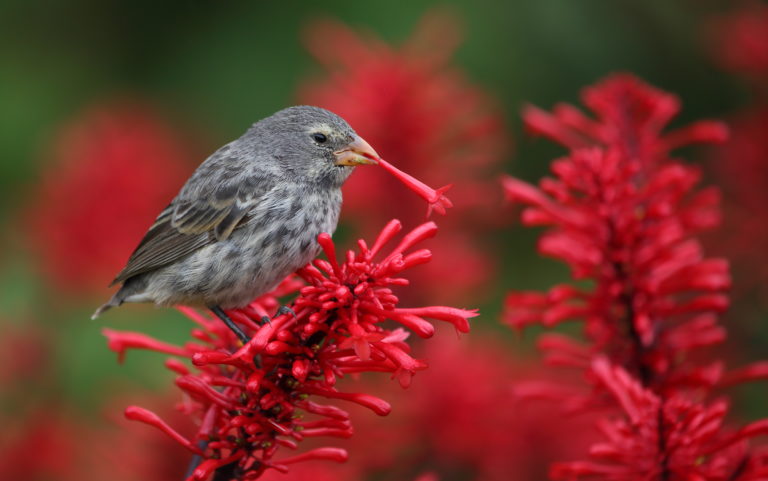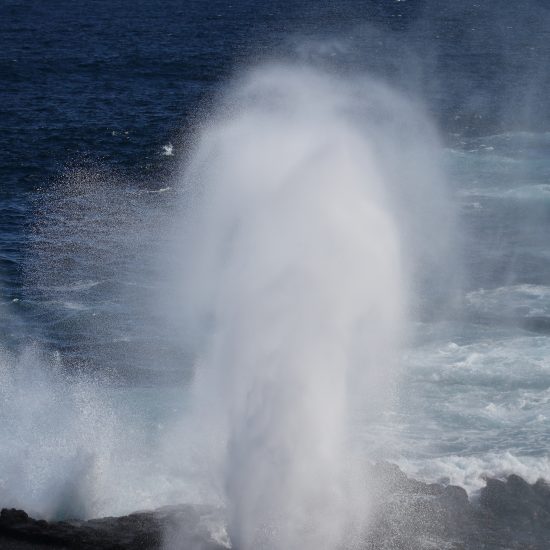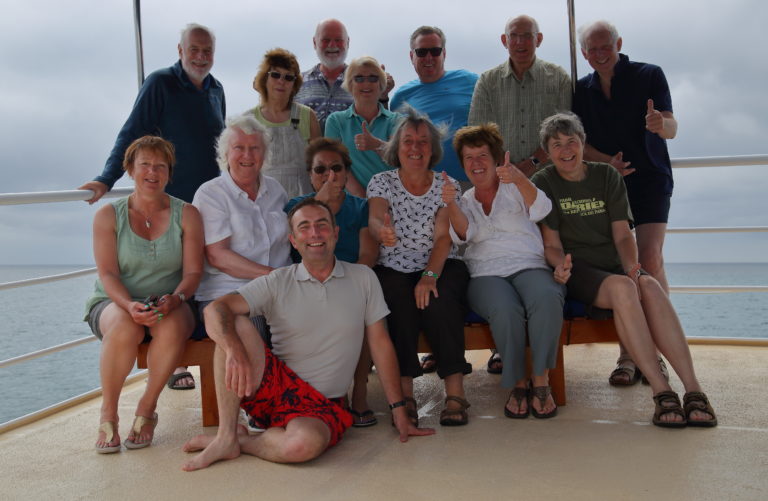
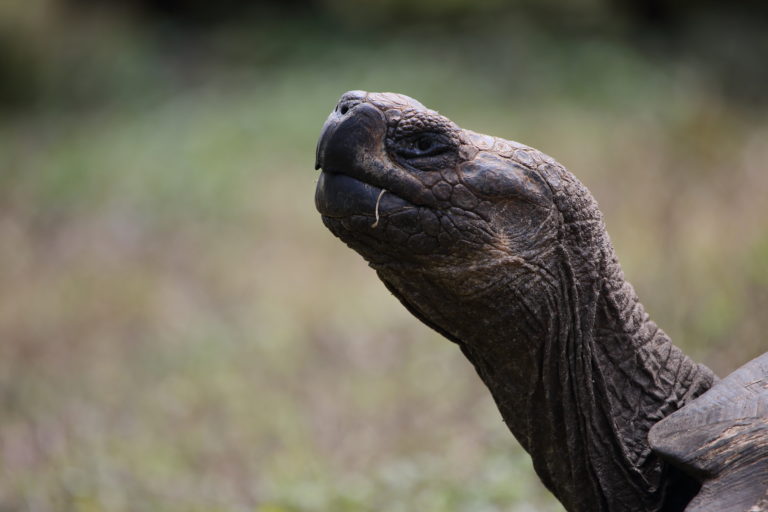
“You have reached a unique place in the world; GALÁPAGOS”, proclaims a sign in the arrivals hall at Baltra airport, the ‘gateway’ to these “Enchanted Islands”, where our first bird is the Medium Ground-Finch, spotted from inside the arrivals hall! Outside the airport building Small Ground-Finches, more Mediums, and handsome Galápagos Doves all hop on and off the café tables. From here it’s a short bus ride to the Itabaca Channel separating tiny Baltra (Seymour) from the much larger island of Santa Cruz (Indefatigable), where numerous Brown Noddies, Brown Pelicans, and Blue-footed Boobies fly back and forth under the watchful eye of Magnificent Frigatebirds. We also spot a couple of endemic Lava Herons here. Driving into the central highlands of Santa Cruz, the arid landscape of xerophytic scrub is replaced by lush verdant woods, including endemic ‘Daisy Trees’, festooned with epiphytic moss, which thrives here in the moisture laden mist (La Garúa). Suddenly there are Giant Tortoises in every direction, with attendant Cattle Egrets, and while the awesome dome-shelled giants trundle around, or simply wallow in muddy pools, we also enjoy arm’s length views of the endemic Large-billed Flycatcher, as well as Galápagos Mockingbird and numerous Smooth-billed Anis and Yellow Warblers. There are also plenty of Darwin’s Finches to ‘classify’, with Small, Medium, and stocky Large Ground-Finches, as well as Woodpecker Finch, Green Warbler-Finch and a pair of Small Tree-Finches, all from the same spot! Five minutes later, we add Vegetarian Finch to the list, making seven different species in one morning! It’s remarkable to think that such starkly differing designs could arise from a common ancestor! We finish a very productive morning with petite White-cheeked Pintails dabbling alongside wallowing Giant Tortoises.
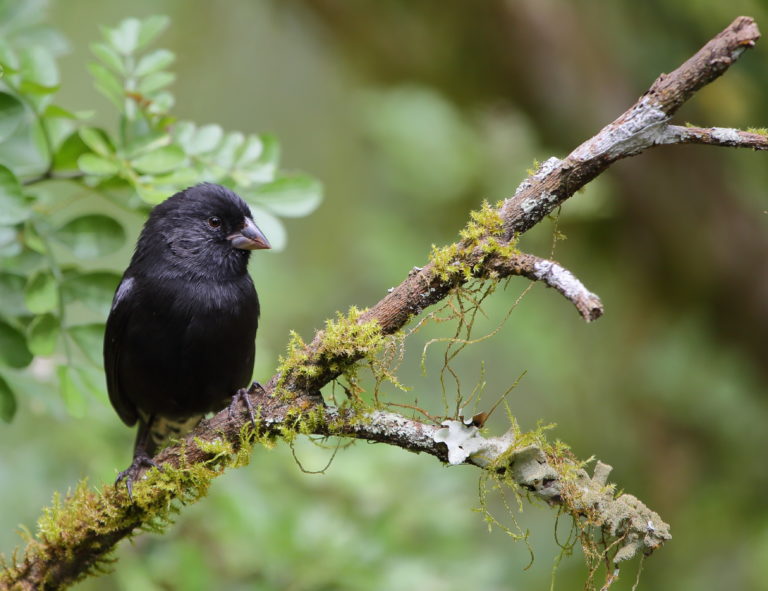
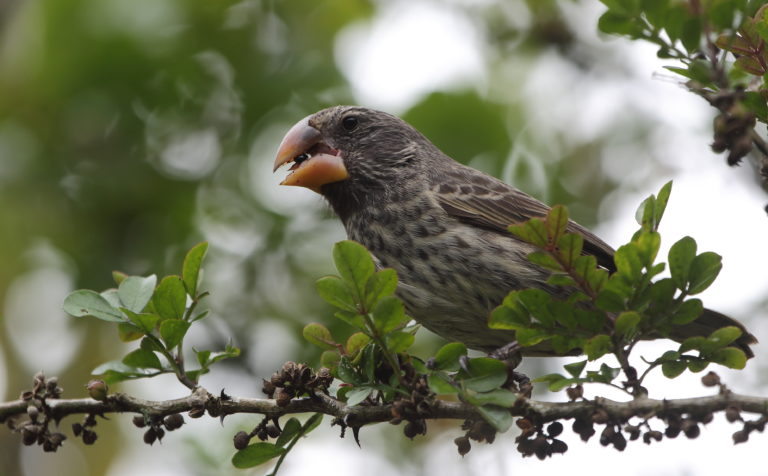
After lunch at a restaurant secluded in the forest, we ‘discover’ some enormous Collapse Holes, where the land has slipped downwards by hundreds of feet, as if created by large scale open cast mining. The surrounding Scalesia forest produces more close views of Green Warbler-Finch and Small Tree-Finch, amongst a total of eleven endemics in one day! It’s almost dark by the time we board the swish Cachalote Explorer, which gently rocks us to sleep after dinner, while anchored in the channel.
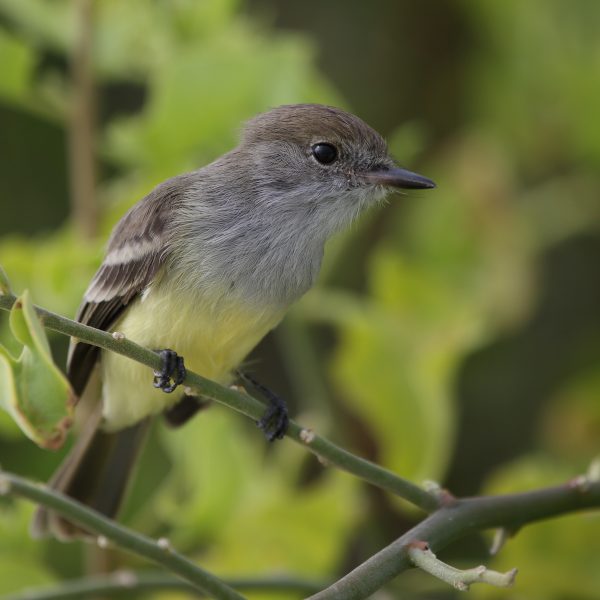
The engine starts up at 5am and by dawn we are moored in a narrow sound between North and South Plaza, with Elliott’s Storm-Petrels daintily pattering around the stern. We board the Pangas for a ‘dry’ landing on the tiny south island, where the vegetation consists of tall Prickly Pear Cactus ‘trees’ and a carpet of red succulents. Once ashore amongst snoozing Swallow-tailed Gulls, which are nocturnal feeders, with large brown eyes bordered by a striking red eye ring, a jet black male Galápagos Cactus-Finch, busily nest building in a tall cactus, is new for the trip, along with tiny scurrying Lava Lizards and hefty yellow-headed Land Iguanas, all passively vying for the attention of our cameras, especially one of the Land Iguanas, greedily munching on a whole fallen prickly pear fruit, which it eventually realizes is too big to swallow. At the far side of the island the trail follows a line of low cliffs, where dozens of Galápagos Shearwaters sail by along with Blue-footed Boobies, Brown Pelicans and the occasional Red-billed Tropicbird and Nazca Booby. With so much to see, a couple of memorable hours also fly by.
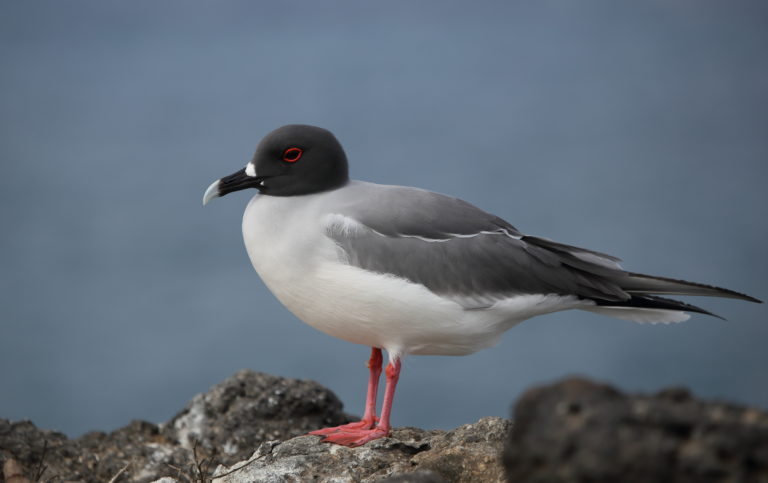
Once back on board, it’s time to ‘rock ’n’ roll’ south to Santa Fé (Barrington), escorted by Magnificent Frigatebirds at eye level with the sun deck, while ‘chum’ generously provided by certain ‘poor sailors’ attracts a posse of Elliott’s Storm-Petrels, offering plenty of photo-opportunities for those with stronger stomachs! After lunch, it’s a bumpy ride in the Pangas for a ‘wet’ landing on a sandy beach amidst a colony of Galápagos Sea Lions, completely unfazed by our arrival. Such tame behaviour makes these islands a paradise for wildlife watchers and photographers. Along the trail, a Galápagos Hawk soars overhead, a Santa Fé Rice Rat dashes for a bolt hole, and we literally step over hefty Santa Fé Land Iguanas and Painted Locusts, while Galápagos Mockingbirds, Small Ground-Finches and several Yellow Warblers hop around our feet! A very obliging pale bifasciata Grey Warbler-Finch also shows really well. Back at the beach, there’s time for a paddle with the Sea Lions, a turtle and a diving Blue-footed Booby before the return boat ride, with a school of five Spotted Eagle Rays just below the surface of the clear blue water. Another day filled with remarkable sights.
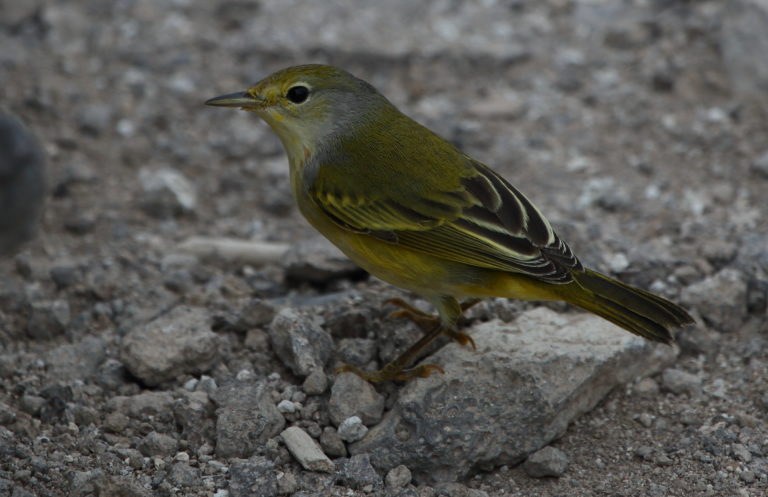
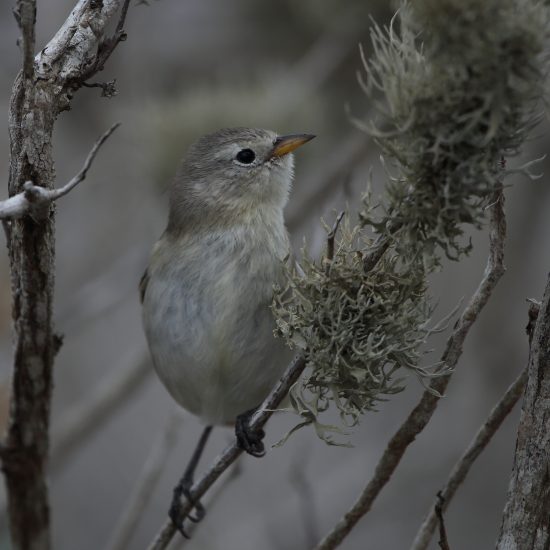
This morning we awake to the spectacular sight of Kicker Rock, a towering sheer-faced chevron of rock, looking like a giant shark’s tooth, separated from its larger neighbour by a narrow deep channel. First stop is a ‘wet’ landing at Cerro Brujo on San Cristóbal (Chatham), where our guide Juan tells us to look out for the San Cristóbal Mockingbird, but we don’t have to look far as it comes to us, first perching on a national park sign just three yards away, before investigating our shoes! Just inland from the beach, a lagoon produces more White-cheeked Pintails and a couple of Black-necked Stilts, with yet more Yellow Warblers hopping around the black rocks, alongside the ubiquitous Sea Lions. Walking along a sweeping white sandy ‘desert island’ beach, lapped by clear blue water in the company of Sea Lions, with Brown Pelicans and Blue-footed Boobies plunge diving just offshore, is a real privilege.
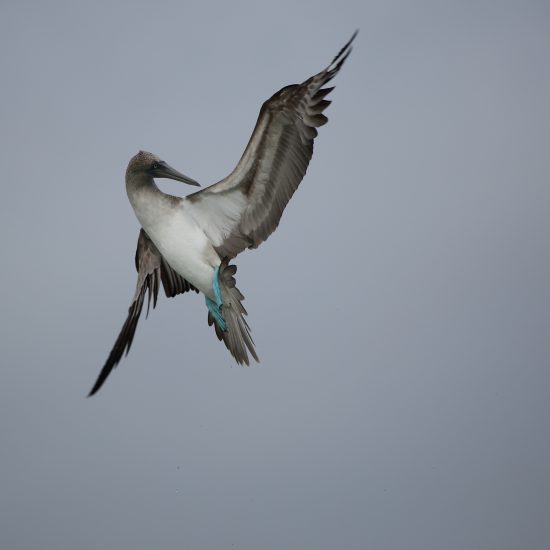
This afternoon, we have a ‘dry’ landing in Puerto Baquerizo Moreno, with yet more Sea Lions and Sally Lightfoot Crabs on the sunny waterfront, along with a couple of dozy looking Yellow-crowned Night-Herons. From here it is a relatively short bus ride inland and yet the climate is ‘poles apart’ with misty cloud shrouding the upland landscape, which is dripping with drizzle. Consequently, the ‘viewpoint’ is not fit for purpose except for very close views of luteola Grey Warbler-Finches, looking remarkably like plump Chiffchaffs, but so tame that one even hops onto Rob’s shoe!
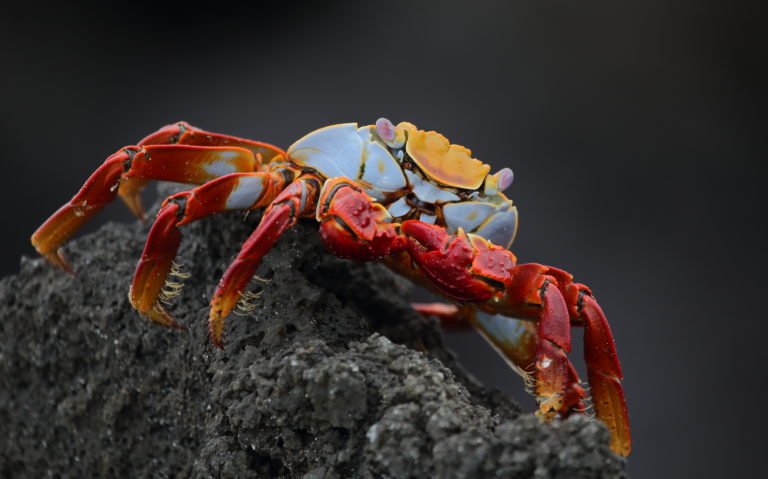
It’s a new day with a different vista, this time across the turquoise water of Gardner Bay off Española (Hood), with the usual Elliott’s Storm-Petrels circling around the stern. We land on another idyllic white sandy beach with the usual Sea Lions, as well as a welcoming party of inquisitive and vocal Española or Hood Mockingbirds, so curious that they hop around our feet and onto our rucksacks lying on the sand! Nearby a Large Cactus-Finch hops unobtrusively on the sand near the bushes, while crushing seeds with its heavy sharp-pointed beak. Combing the beach, we quickly find a third sub species of Grey Warbler-Finch (cinerascens), again around our feet, as well as Galápagos Doves, and then there is time to go for a swim with the Sea Lions. Back on board, it’s a quick change ready for snorkeling with a variety of colourful fish such as purple and orange King Angel Fish, blue Yellow-tailed Surgeon Fish, impressively large turquoise and pink Blue-chinned Parrotfish and diminutive Pink Cardinalfish, as well as a Green Turtle nibbling at the algae on the rocks.
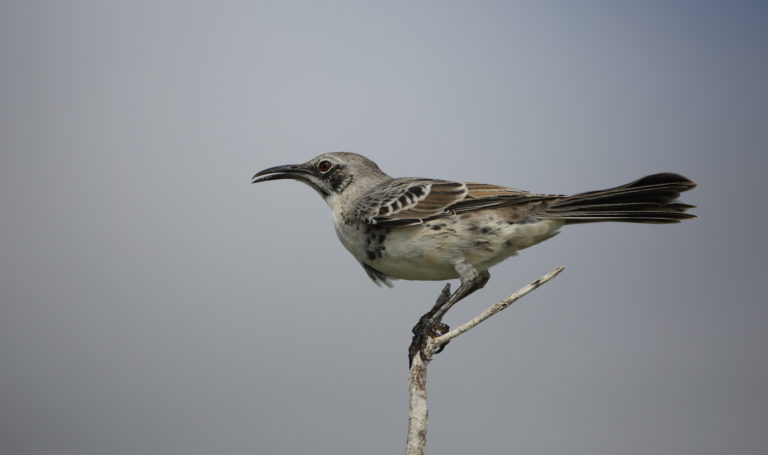

Still on Española, we land this afternoon at Punta Suarez. Stepping over an ‘orgy’ of large red and black sneezing Marine Iguanas, sprawled all over each other, and all over the trail, there is soon one less, once a Galápagos Hawk swoops down on one of the ‘tiddlers’. We soon come face to face with the first of many ‘drop dead gorgeous’ Waved Albatrosses, busy performing their stylised courtship rituals, in which they ceremoniously bow, and then clap their long lemon yellow bills together, followed by taking turns to wave their heads from side to side, then standing to attention and pointing skyward, and culminating with the bizarre-looking action of holding their beaks wide open as if suddenly startled. All this is repeated and can go on for several minutes until they walk away with a slow swaggering action. What a remarkable spectacle, and surely bird of the cruise, although the graceful Red-billed Tropicbirds, with long flowing white tails are also strong contenders. Further along the trail, we pass through a colony of persil-white Nazca Boobies, along with one or two Blue-foots and Swallow-tailed Gulls, before reaching the blowhole, where incoming surf is compressed through a gap in the lava, forcing up roaring spouts of spray higher than a house! Next stop is the Albatross ‘runway’ where these marvellous birds take a run and jump off the edge of the cliffs, launching themselves into a flight that could take them as far as Japan! Even when airborne they continue ‘pedaling’ with their massive webbed feet, which looks quite comical. Hundreds of photos later, on the way back to the jetty, a couple of American Oystercatchers pose nicely in the early evening sun, providing even more footage for the hard-working cameras, and rounding off a fantastic day on a remarkable island.
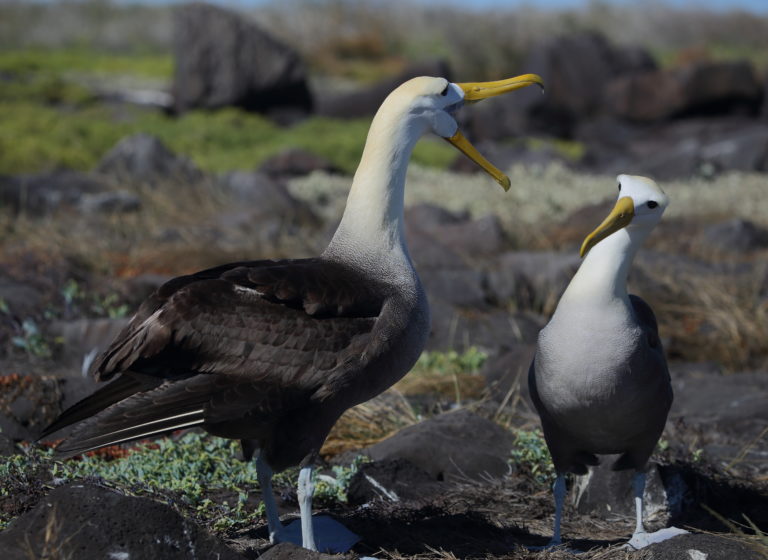
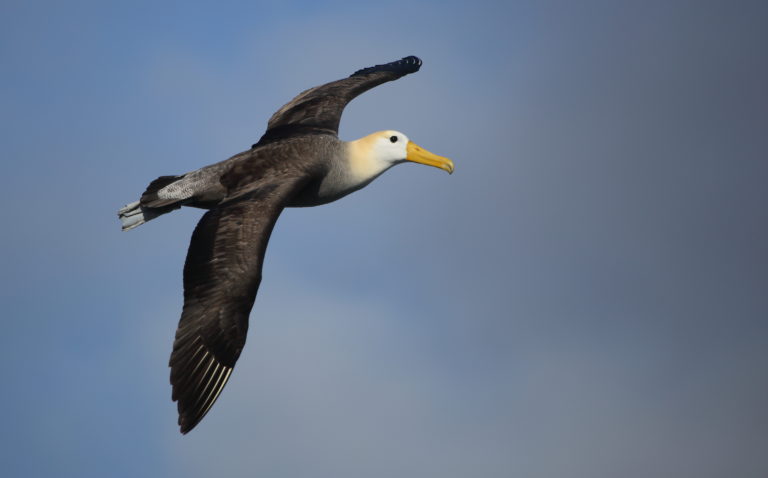
After another smooth overnight cruise we awake off the island of Floreana (Charles), with the usual Elliot’s Storm-Petrels defying gravity while feeding close in by the boat. First stop on Floreana is Punta Cormorant, where we come face to face with a Green Turtle swimming along the rocky shore, before a ‘wet’ landing on a beach with the usual Sea Lions, as well as Blue-footed Boobies with downy white chicks. The large shallow lagoon here is home to shocking pink Greater Flamingoes, creating a photogenic scene with their sinuous necks reflecting in the still water. After elevenses back on board, it’s a quick change ready for snorkeling at the Devil’s Crown, an aptly named jagged ring of lava formed from the weathered remnants of a partly submerged volcano, and a breeding site for wheeling flocks of Galápagos Shearwaters. Drifting along on the current, the teeming underwater life here includes chunky Chocolate Chip Sea Stars, slender-armed Blue Sea Stars, Green Turtles, White-tipped Reef Sharks, a squadron of Golden Rays and a myriad other tropical fish in their thousands!
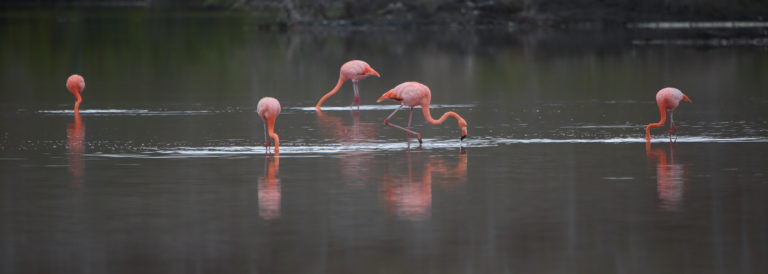
We spend the afternoon, messing around in boats on a leisurely Panga ride along the rocky shore, or a not so leisurely ride for the ‘happy few’ that chose to kayak. Along the shore we spot Whimbrel, Wandering Tattler, more Blue-footed Boobies, a Magnificent Frigatebird perched in a low bush at the water’s edge, and best of all, a Galápagos Penguin close enough for shots with a wide angle lens! Landing at Post Office Bay, we sort the mail in the nearby barrel, and listen to the colourful human history of Floreana regaled by our guide Juan.
For a change to the usual routine we set sail in the late afternoon, for some ‘pelagic’ birding, and the Magnificent Frigatebirds soon join us on board by perching on the mast, while the usual posse of numerous Elliott’s Storm-Petrels is joined by several Wedge-rumped Storm-Petrels, showing much more white on the rump. Eventually, as Floreana recedes on the horizon we spot the first of several Galápagos Petrels, making arching flights alongside the vessel, giving excellent views of this rare seabird.
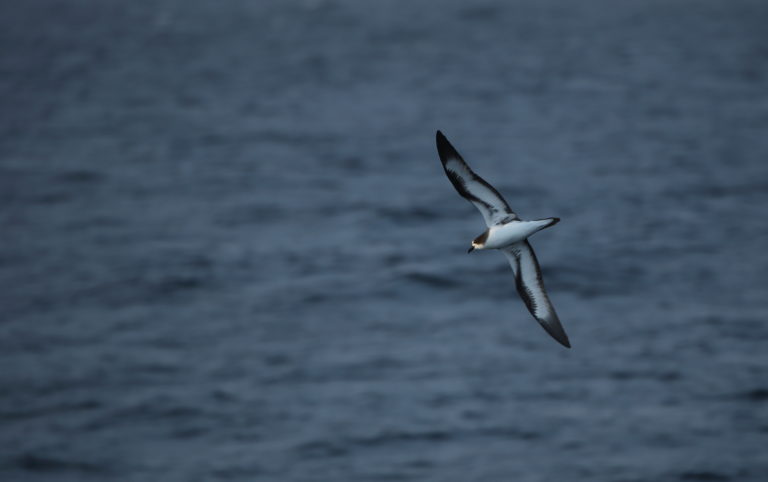
We awake to a lovely sunrise, near Dragon Hill off the coast of Santa Cruz, where the leafless sun-bleached trees, from a distance, look as though they are coated with a thick frost. The planned ‘dry’ landing on a small headland of black lava has to be abandoned due to the heavy swell, in favour of a ‘wet’ landing on a soft sandy beach, but without the usual Sea Lions. Inland, the succulent xerophytic vegetation makes a colourful landscape with Dragon Hill in the background and the dry sandy soil is ideal terrain for the Land Iguanas to dig nesting burrows into, and we come across several impressively bulky yellow Land Iguanas along the walk. Once back on board, some members of the group relax on the sun deck, while others go snorkeling with another impressive selection of fish in their thousands, including huge shoals of shiny slender Black-striped Snappers, occasionally spooked by dashing torpedo-like Spanish Mackerel.

After lunch, we set sail for Santiago (James), along with the usual entourage of Frigatebirds above the ‘poop deck’. Once moored off the spectacular Pinnacle Rock of Bartolomé (Bartholomew), another snorkeling opportunity awaits, but this time we jump in with a group of Penguins! As usual there are King Angel Fish and thousands of Pink Cardinals and Black-striped Snappers, as well as the spectacular psychedelic Blue-chinned Parrotfish, chomping away at hard corals with its powerful jaws. The last activity of the day involves a wet crossing for a ‘dry’ landing on Santiago’s unearthly landscape of ‘fresh’ black lava, crumpled into rope-like ripples as it set little more than 120 years ago, and little changed since then. Even in this apparently sterile environment, with no soil or surface water, and baked by the tropical sun, there is life; a solitary cactus, somehow surviving in a crack in the lava and the odd Painted Locust.

We have an overnight sailing north across the equator, to remote Genovesa (Tower) where our first landing is on a coral beach in Darwin Bay, amidst numerous Swallow-tailed Gulls, including a few chicks looking like overgrown juvenile Black-headed Gulls. Tiny sharp-beaked Genovesa Ground-Finches and the mentalis race of Grey Warbler-Finch hop around at close range, along with Galápagos Mockingbirds, the stonking-billed Large Ground-Finch and the Genovesa Cactus-Finch in the cacti beside the path. The shrubs along the back of the beach, are festooned with nesting Great Frigatebirds and Red-footed Boobies, one or two of which are white morphs. Each Frigatebird chick fills its nest, consisting of a flimsy platform of loose twigs, barely two feet above the ground. At this stage, they already have the long hooked bill but with downy white heads, while the mothers are close enough to show a pink eyering, and the fathers have a deep green glossy sheen on the mantle. Overhead, the air is full of Frigatebirds and Boobies, one of which ignores the two metre rule by landing on Peter’s shoulder! With so much going on in this remarkable place, time flies by yet again.
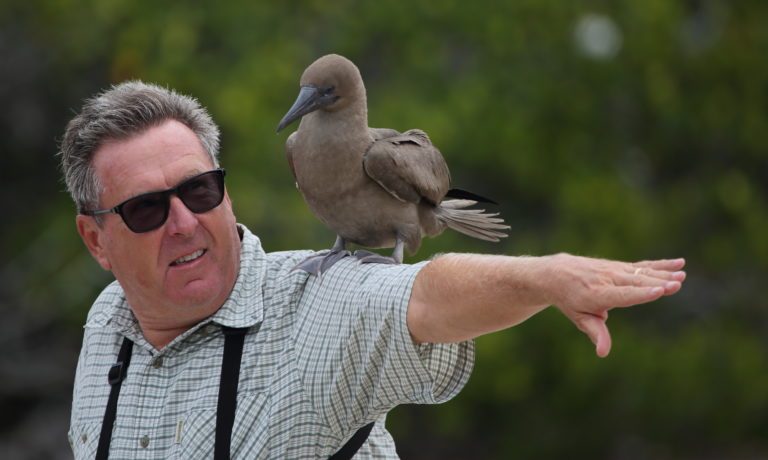
The mid morning snorkel session along the wall of the flooded caldera, which forms Darwin Bay is the best of all the swims so far, with an amazing variety of colourful fish, such as the now familiar King Angels, Razor Surgeons, Blue-chinned Parrots and Black-striped Snappers, plus powder blue Giant Damselfish, with long white-trimmed fins and tails, Hieroglyphic Hawkfish, with an intricately ‘scribbled’ pattern, and yellow-striped Moorish Idols, with long flowing white dorsal fin streamers, delicately ‘pecking’ the rocks with their long slender snouts.
This afternoon, cruising slowly along the base of the guano-plastered cliffs, we spot a group of snoozing Galápagos Fur Seals from the Pangas, and then follow in the footsteps of Prince Philip, Duke of Edinburgh, up the cliffs and onto the flat arid surface of Genovesa, through colonies of Nazca and Red-footed Boobies. Beyond the dry and dead looking shrubs is an open area of broken lava slabs, swarming with noisy Red-billed Tropicbirds, hurtling by like the Red Arrows, and Wedge-rumped Storm-Petrels, frantically dashing to and fro to avoid the clutches of several watching Short-eared Owls, including one with an unfortunate petrel already tightly gripped in its talons. Although it is the same species as our own Asio flammeus, this is the dark-faced galapagoensis subspecies which is perfectly camouflaged against the dark brown lava hereabouts. Before our last supper on board the Cachalote Explorer, we enjoy a cocktail with the crew and thank them for a truly wonderful experience.
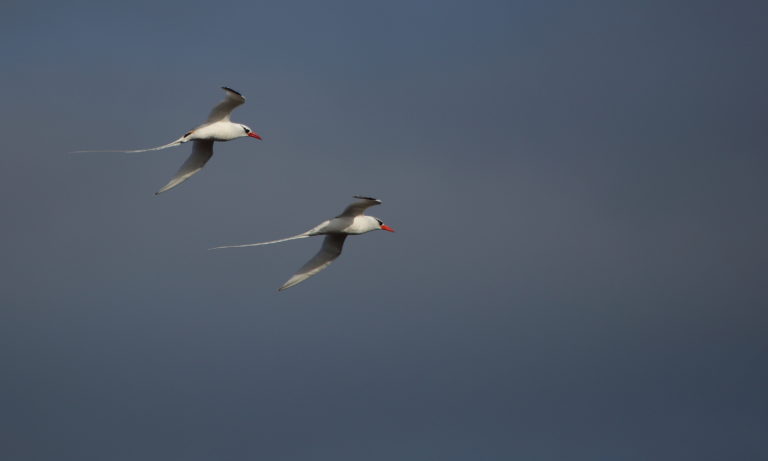
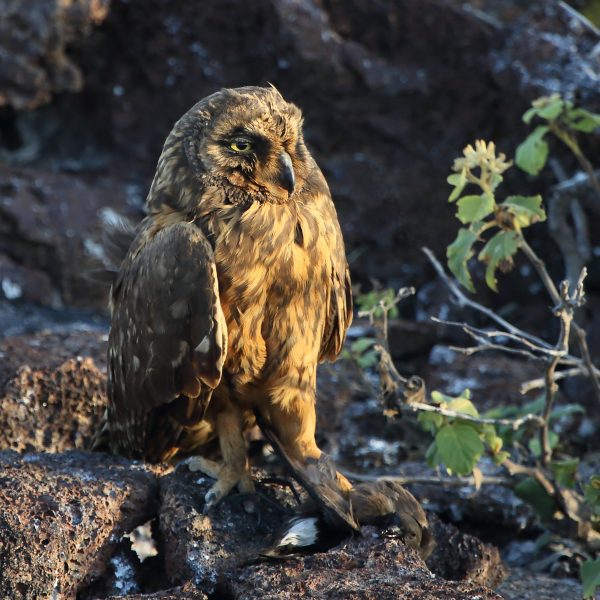
Back in the southern hemisphere, we set off at first light for a Panga ride into the Red Mangroves of Black Turtle Cove. Paddling quietly along the tranquil backwaters, we enjoy a magical cruise with Green Turtles and Black-tipped Sharks, right alongside the dinghies. Back at the vessel, it’s sadly time to say adios to the crew and disembark for the airport and a flight back to the mainland, but these fantastic islands have one last amazing treat in store; Small Ground-Finches actually hopping between the seats of the departure lounge! The sign at the airport is spot on; the Galápagos really is “a unique place in the world”.
